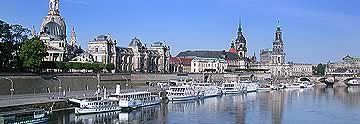 |
 |
The
city of Dresden
|
|
|
 |
Dresden, protected for centuries
by mighty fortifications, the Saxon
capital developed splendour and
activity.
Even today the buildings from the
Renaissance, Baroque and 19th century
determine the Elbe front and the
face of the city.
In spite of vast destruction during
the Second World War, the Old City
part of Dresden has preserved or
regained fascinating ensembles.
Many important cultural institutions
are situated along the Old Cityside
of the Elbe banks: from the Old
Masters Picture Gallery to the „Green
Vault“, the treasure chamber
of the Saxon electors and kings.
Famous sights worth visiting are
amongst others the Zwinger, an impressive
testimony of the Baroque period,
and the Semper Opera House. Magnificent
promenades on the bank of the Elbe,
interesting museums and institutions,
industrial monuments, charming details
— Dresden has a lot for you
to discover and offers attractions
in great variety. |
|
 |
Frauenkirche
Church
Since October, 30th 2005 the steeple
of the Frauenkirche overtops the
Dresden skyline again.The reconstruction
of the Frauenkirche
is an impressive symbol of international
reconciliation after World War II.
|
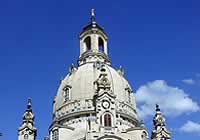 |
|
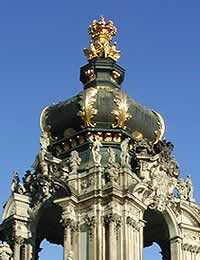 |
|
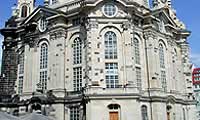 |
 |
Dresdner
Zwinger
Built 1710-28 by the architect
Pöppelmann in cooperation
with the sculptor Permoser.
Originally designed as an
orangery and a setting for
court festivities, it was
later used for exhibitions.
Most perfect example of Late
Baroquearchitecture in Germany.
|
|
|
 |
 |
Semper
Opera House
Built 1838-41 by Gottfried Semper.
Gutted by
fire in 1869. Rebuilt 1871-78 in
High Renaissance style according
to Semper´s plans by his son
Manfred.
The house was completely destroyed
in 1945 and
reopened in 1985 after extensive
reconstruction. |
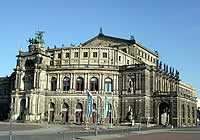 |
|
 |
 |
Sächsische
Dampfschiffahrt
With nine historical paddle-steamers,
between
78 and 128 years old, Sächsische
Dampfschiffahrt owns the oldest
and largest paddle-steamerfleet
in the world. Two modern salon
ships and two smaller motor cruisers
complete the line-up. |
 |
|
 |
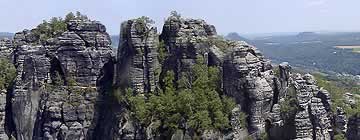 |
 |
Saxon
Switzerland
The Elbe Sandstone Mountains
are not mountains at all, but a
deeply cut plateau, an erosion landscape
with highly typical forms. |
|
| |